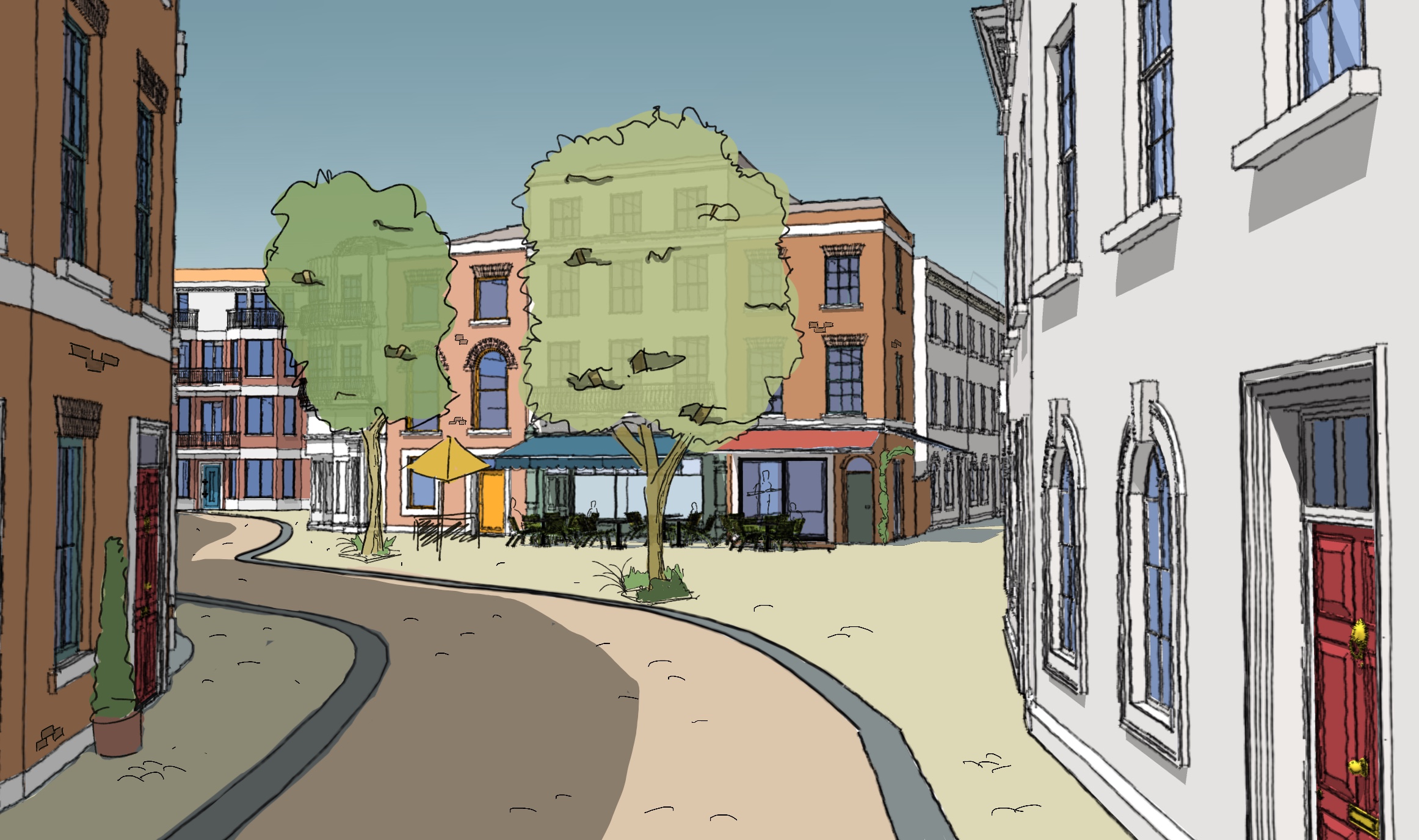For planners, councillors, communities – and anyone who cares about making better places
A well-crafted design code is like a good recipe. It sets the parameters, guides the process and leaves room for creativity. Done well, it doesn’t just unlock good development – it unlocks trust, momentum and investment. Done badly, it gathers dust.
We’ve helped shape dozens of codes – from town centres to garden suburbs – and seen what works. Here are five rules we live by.
What is a design code?
It’s not a design guide.
- A design guide offers advice.
- A design code sets rules.
Where a guide might say “buildings should respond to local character,” a code says “eaves lines must align with existing terraces, and new roofs must be pitched between 30–45°.”
Design codes don’t just illustrate good ideas — they define what is allowed. They create clarity for everyone: planning officers, councillors, communities and developers alike. A vague guide can delay good development. A good code speeds it up by being crystal clear about what’s allowed — de-risking homes and places that follow the rules.
That trade-off — easier development if you follow the rules — is key.
Why ‘must’ matters
In planning documents, ‘should’ means maybe. It invites exceptions, arguments and delays. ‘Must’ means certainty. It gives planners confidence to refuse poor design and gives developers clarity on what will be supported.
- Use must for requirements.
- Use may or can for flexibility.
- Use should only if you’re inviting interpretation.
Now that’s clear, here’s how to do it well…
1. Clarity Over Complexity
A design code isn’t a design thesis. It should be as clear to a planning officer as it is to a local resident. Strip out the jargon. Use consistent diagrams, photos that show intent, and language that doesn’t require a glossary.
“If a resident can’t understand it, it probably won’t help them.”
Top tip: If you need footnotes, you’re probably doing it wrong.
2. Place First, Policy Second
Start with what’s there — the block pattern, the grain, the rhythm of windows and doors. Too many codes begin with housing targets and end with generic layouts. Don’t.
“Start with the street, not the spreadsheet.”
A code rooted in real geometry will always do more heavy lifting than a policy about ‘sense of place’.
3. Consensus, Not Just Compliance
The best codes aren’t written behind closed doors. They’re shaped with local people and tested in the light. Co-design doesn’t mean letting go of standards. It means building the legitimacy to hold the line.
“Design codes should build common ground, not just pander to professionals.”
It’s not just what’s in the code. It’s who’s behind it.
4. Visual and Spatial, Not Just Written
Think like a builder, not a lawyer. A good code should work from a sketchpad or on-site — not just in the planning portal. Use sections, axonometric diagrams, block plans and pattern libraries. Lead with drawings, not disclaimers.
“Show, don’t tell.”
A picture is worth a thousand appeal decisions.
5. Flexible Where It Matters
A design code isn’t a straitjacket. It should hold the line on the things that matter — frontage, massing, materials, rhythm — and leave room for variation within a shared grammar.
“Rigorous in purpose. Flexible in execution.”
Good coding is about permission, not just restriction.
Want to get your code right the first time?
Great streets aren’t copy-pasted. They rhyme. We’ve helped councils and landowners write codes that avoid political U-turns, survive planning scrutiny and deliver beautiful, lasting places. Whether it’s a street, a neighbourhood or a whole town, we can help you get the framework right.
📧 contact@createstreets.com
🌐 www.createstreets.com/design-codes


